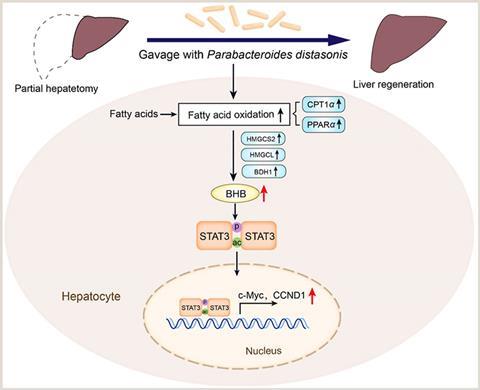This new article publication from Acta Pharmaceutica Sinica B, discusses how Parabacteroides distasonis promotes liver regeneration by increasing β-hydroxybutyric acid (BHB) production and BHB-driven STAT3 signals.

The liver regenerative capacity is crucial for patients with end-stage liver disease following partial hepatectomy (PHx). The specific bacteria and mechanisms regulating liver regeneration post-PHx remain unclear. This study demonstrated dynamic changes in the abundance of Parabacteroides distasonis (P. distasonis) post-PHx, correlating with hepatocyte proliferation.
READ MORE: Breast milk proteins may influence abundance of health-linked gut microbes
READ MORE: Gut bacteria are crucial to the body’s ability to repair liver
Treatment with live P. distasonis significantly promoted hepatocyte proliferation and liver regeneration after PHx. Targeted metabolomics revealed a significant positive correlation between P. distasonis and β-hydroxybutyric acid (BHB), as well as hyodeoxycholic acid and 3-hydroxyphenylacetic acid in the gut after PHx.
Liver regeneration
Notably, treatment with BHB, but not hyodeoxycholic acid or 3-hydroxyphenylacetic acid, significantly promoted hepatocyte proliferation and liver regeneration in mice after PHx. Moreover, STAT3 inhibitor Stattic attenuated the promotive effects of BHB on cell proliferation and liver regeneration both in vitro and in vivo.

Mechanistically, P. distasonis upregulated the expression of fatty acid oxidation-related proteins, and increased BHB levels in the liver, and then BHB activated the STAT3 signaling pathway to promote liver regeneration.
This study, for the first time, identifies the involvement of P. distasonis and its associated metabolite BHB in promoting liver regeneration after PHx, providing new insights for considering P. distasonis and BHB as potential strategies for promoting hepatic regeneration.







No comments yet